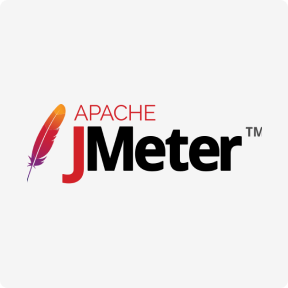The employee life cycle lets HR view the employee experience with the same discerning eye as marketing professionals dissect the customer experience. Similarly, closely analyzing the employee life cycle shows what factors are negatively affecting the employee experience and how to best engage your entire workforce. It might not be possible to plan an in-person meet-up, especially if your projects have short turnaround times.

Given these conflicting feelings, individual and team morale may rise or fall throughout the ending stage. It is highly likely that at any given moment individuals on the team will be experiencing different emotions about the team’s ending. Behaviors during the Norming stage may include members making a conscious effort to resolve problems and achieve group harmony. There might be more frequent and more meaningful communication among team members, and an increased willingness to share ideas or ask teammates for help.
Microsoft Teams Lifecycle Management in 3 Simple Steps
You may also see the formation of sub-groups, or challenges to the role of the leader. If there is a designated leader, they must establish the group’s confidence and respect. If there is no designated leader, one may emerge by common consent, or there may be some competition and conflict as group members vie for leadership. The group leader must also ensure that a balance is achieved between the more extrovert and the more introvert members of the group. This helps to build group cohesiveness, or a feeling of belonging to the group. However, the model is a very useful one as an outline of the processes that groups need to go through to reach a stage of performing.
Keep reminding the team to check in with each other regularly in person or via instant chat, but stay out of their way. They will waste time and lose their focus if they have to answer frequent, unscheduled questions about what they’re working on. Encourage team members to develop a schedule filled with large blocks of time that are free from interruptions like meetings or check-ins.
Set up checkpoints for ongoing management
It is also possible that groups may never get beyond Storming, especially if the conflict is extreme. Most of these suggest that groups go through a number of stages that can be considered as a life-cycle. It’s easy for everyone — including you — to get in a tunnel and focus on their own lists of tasks. Make sure everyone steps back each day or week to take a look at the larger picture. Disagreements are unavoidable on teams, especially when each person on the team has a different perspective on how to approach the issues the team encounters.
Team performance may actually decrease in this stage because energy is put into unproductive activities. Members may disagree on team goals, and subgroups and cliques may form around strong personalities or areas of agreement. To get through this stage, members must work to overcome obstacles, to accept individual differences, and to work through conflicting ideas on team tasks and goals. As the team members already know about everyone’s individual skills and backgrounds, they must start searching for a way to collaborate and progress. In this stage, it is common for teams to have several divided groups, each of them with its own informal leader.
Stage Five: The Disbanding Stage (Adjourning/Mourning)
By 2026, generative AI will significantly alter 70% of the design and development effort for new web applications and mobile apps. In the constantly evolving world of healthcare, patient-centric care is the beacon guiding every innovation. As technology intertwines more deeply with healthcare, platforms like Powell Software’s intranet are heralding a new age, transforming collaboration, data management, and patient engage… At Powell Software, our unwavering commitment to security is evidenced by our recent B grade certification, achieved two years running after a rigorous independent assessment. This grade is not only an honor, but also proof of the trust you place in us. She has a deep understanding of agencies, and works to develop content and campaigns that speak their language and support their unique needs.
- Record and store the meeting in Teamwork.com so that team members can revisit it at any time if they need a reminder of the discussion.
- Bart Willemsen is a VP Analyst with focus on all privacy-related challenges in an international context, as well as on ethics, digital society, and the intersection with modern technology including AI.
- This is the second stage of team development, where the group starts to sort itself out and gain each others’ trust.
- For example, a change in leadership may cause the team to revert to storming as the new people challenge the existing norms and dynamics of the team.
- This is where you set up the roadmap for success and decide whether it’s feasible.
- Paradoxically, this is also a time at which group members often become far clearer about the aims of the group—and when any hidden agendas surface.
- There are no more groups within the team and instead, they all work in a unit with a clear leader.
If the team has been assembled correctly, the leader will know what the strengths are of each team member and will know who will be doing what tasks already. After all, their ability to overcome obstacles and achieve their goals is a reflection of a management job well done. Which means, you may experience these stages in sequential order, or find yourself in a loop with one or more of the stages outlined above.
Module 8: Groups, Teams, and Teamwork
The project management lifecycle is a step-by-step framework of best practices used to shepherd a project from its beginning to its end. It provides project managers a structured way to create, execute, and finish a project. And of course, asking the right questions in your employee life cycle survey is important as well. You can measure your progress on retention by asking employees whether they see themselves at your organization in five years or whether they’d recommend your company to a friend seeking work. You can also get data on the retention factors discussed above through employee life cycle and pulse surveys to see whether you’re successfully prioritizing the things that drive retention at your business.
The norming stage is more harmonious since teams understand why it’s important to ask for help, and how to come to you with questions when they need guidance. This is a concept that psychologist Bruce Tuckman came up with to properly understand the progress of various teams and the development of key contributors. Team members are able to prevent or solve problems in the team’s process or in the team’s progress. Roles on the team may have become more fluid, with members taking on various roles and responsibilities as needed.
Employee Life Cycle Trends
Sometimes there may be a clear end date; for example, if a project is completed, it’s easy to pinpoint when the team’s lifecycle will come to an end and schedule it for deletion. Frequently, however, the team will enter a slow decline that may pick back up several times before activity dies completely. system development life cycle In these cases, how do you know that a team should be archived without closing it prematurely? This is one of many pain points that companies face in Teams’ life cycle management. In a bit, we’ll get into how to define the lifecycle of a team internally and eliminate the uncertainty.

They’ll look to you for guidance and support, and when you establish a trusting two-way conversation, you’ll pave the way towards their professional growth. When this happens, it’s important to take stock of what your team needs. They feel confident and comfortable when approaching you with concerns and questions. You recognize this isn’t any one team member’s fault, but you want to make it right.
Strategic performance management: 5 Steps to do it right
A redefinition of the team’s goals, roles and tasks can help team members past the frustration or confusion they experience during the Storming stage. The factors that lead to employee engagement are unique for every team member, and they change over time, so you need a way to survey employees at every stage of their journey. Life cycle surveys provide insight into how employees feel about your company at the key moments of their experience, whether they’ve just been hired, received a promotion, or decided to leave. Once group members begin to feel that they know one another and common ground has been established, the aims of the group need to be agreed. Sometimes these may have been set in advance, and if so, the leader has a role in making sure that all members understand the goals.
How life cycle assessments can unlock value and lead to more … – GreenBiz
How life cycle assessments can unlock value and lead to more ….
Posted: Tue, 24 Oct 2023 07:33:27 GMT [source]


